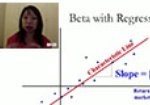Corporate Finance
Course ID: RE6016
Category: Business
Learn how experts approach the financial decision-making process using accepted conventions.
self-taught course
Duration: 10 Hours
$150.00
USD
Take This Course
Take This Course: Corporate Finance
Enrollement Steps
1
Create your free On-Demand account.http://www.ondemand.homburginstitute.com/
2
By selecting "ENROLL NOW" button below. You'll be redirected to our On-Demand eLearning platform to enroll in this course.3
Log In your On-Demand account to proceed with payment to enrole in the course.By signing up, you agree to our Terms of Use and Privacy Policy.
Our On-Demand platform accepts using the Paypal as payment (credit card, debit card or bank account). For other payments view are payment page.breadcrumb
self-taught course Duration: 10 Hours
Course Summary
Financial managers make important decisions every day that affect the finances of companies, both large and small. All business people need to be able to interpret and relate data accurately from financial instruments and other market sources in order to make smart financial decisions. This course will help you understand accepted conventions, financial principles, and techniques used in the manufacturing, merchandising, and service industries. Real world examples will engage your problem-solving skills while lectures and seminars teach you the fundamentals of Corporate Finance. Along the way, you’ll gain an appreciation for the corporate decision-making process that will help you make informed choices that will benefit your business.
How do I take this course?
This course delivers 10 hours of video lecture presentations on key topics in the field of Corporate Finance. You can download and print a copy of the presentation slides, and make notes as you follow along. To make it easier to absorb the material, each hour is divided into short segments, of about 15 minutes each. You can watch as many, or as few segments each day, or each week, in your own time. Each segment is followed by a short quiz to help you review, and test yourself about what you have learned. There is also a dedicated chat room for this course, so you can talk, get help, and just be social as you journey through the corporate financial decision-making process with others online.
Do I get a Certificate of Completion?
Yes. On completion of this course, you will be able to print a Certificate of Completion showing the overall average that you achieved in all of the quizzes. You may be able to take this to your university or college to ask for transfer credits, or to your professional association to see if you can be awarded continuing education credits.
Can I get credit from Homburg Academy?
These lectures are derived from a Core Course for Homburg Academy’s four-year BSc in Real Estate Development and Homburg Academy’s BSc in Real Estate Business, Finance and Investment. If you would like academic credit from Homburg Academy, you should also take part in weekly video-conference discussions with the professor, and write a final exam. Learn more on our Info page.
Joy Chan
BA, MA
Joy Chan is Director of the Envision Group, Singapore. She was previously a Controller with KPMG Central and Eastern European Regional Office, and she also held senior positions with International Enterprise Singapore and the Inland Revenue Authority of Singapore. She is currently an Adjunct Professor at Homburg Academy, and Visiting Professor at many European universities, including Adjunct Senior Lecturer of Finance at Central European University, Budapest, where she teaches core and elective finance courses. Joy Chan is a Chartered Financial Analyst who holds a BBA in Business from Nanyang Technological University in Singapore, and a Master of Commerce from the University of Sydney in Australia.
Lecture 1- Introduction to Corporate Finance
Understand the corporate firm, its goals, and an overview of the different ways that corporate finance can be structured, and be introduced to financial markets. Enter the exciting world of world of corporate securities as claims on the firm.
Lecture 2 - Time value of Money
This essential foundation is required to understand present and future values. Examine the power of compounding, and explore multiple cash-flows, ordinary Perpetuities, annuities, loan payment, and retirement calculations.
Lecture 3 - Financial Statement Analysis
Financial statements tell a story, and they are an important window into the activities of a company. Learn how to review financial statements, and understand financial ratios and analysis.
Lecture 4 - Bond valuation
In this lecture, Joy Chan examines bond valuation calculations, and bond pricing, and in the process enters the exciting world of financial risk.
Lecture 5 - Stock valuation
How are stocks valued? In this lecture, you will explore stock valuation calculations, including growth estimates, payout ratios, and the price-earnings model.
Lecture 6 - Capital Budgeting Techniques
In this session, Joy Chan discusses the concept and intricacies of Net Present Value. Examine other methods for valuing investments, including Internal Rate of Return, Profitability Index, and Payback Period.
Lecture 7 - Capital Budgeting Applications
Examine budget planning, including the concepts of Incremental Cash flows, and Baldwin Case Analysis.
Lecture 8 - Risk & Return I
Investment is about risk and return. Begin this two part session by examining risk free rates and risk premiums. You will also examine the concept of Efficient Portfolios and Diversification.
Lecture 9 - Risk & Return II
In this follow-up lecture on risk and return, you will cover Betas and Capital Asset Pricing Model, and understand the weighted average cost of capital.
Lecture 10 - Corporate Financing & Weighted Average Cost of Capital (WACC)
In this final presentation, Joy Chan concludes with some real world considerations in capital structure, and explains trade off theory and pecking order theory.
Quiz Certificate

Introduction to Corporate Finance
Understand the corporate firm, its goals, and an overview of the different ways that corporate finance can be structured, and be introduced to financial markets. Enter the exciting world of world of corporate securities as claims on the firm.

Time value of Money
This essential foundation is required to understand present and future values. Examine the power of compounding, and explore multiple cash-flows, ordinary Perpetuities, annuities, loan payment, and retirement calculations.

Financial Statement Analysis
Financial statements tell a story, and they are an important window into the activities of a company. Learn how to review financial statements, and understand financial ratios and analysis.

Bond valuation
In this lecture, Joy Chan examines bond valuation calculations, and bond pricing, and in the process enters the exciting world of financial risk.

Stock valuation
How are stocks valued? In this lecture, you will explore stock valuation calculations, including growth estimates, payout ratios, and the price-earnings model.

Capital Budgeting Techniques
In this session, Joy Chan discusses the concept and intricacies of Net Present Value. Examine other methods for valuing investments, including Internal Rate of Return, Profitability Index, and Payback Period.

Capital Budgeting Applications
Examine budget planning, including the concepts of Incremental Cash flows, and Baldwin Case Analysis.

Risk & Return I
Investment is about risk and return. Begin this two part session by examining risk free rates and risk premiums. You will also examine the concept of Efficient Portfolios and Diversification.

Risk & Return II
In this follow-up lecture on risk and return, you will cover Betas and Capital Asset Pricing Model, and understand the weighted average cost of capital.

Corporate Financing & Weighted Average Cost of Capital (WACC)
In this final presentation, Joy Chan concludes with some real world considerations in capital structure, and explains trade off theory and pecking order theory.
- 10 hours on-demand lectures
- 204 Quizzes
- 10 downloadable powerpoint slides
- 365 day access
- Mobile access
- Assignments
- Certificate of Completion
-
Corporate Finance
Learn More
-
Introduction to Business
Learn More
-
Statistics
Learn More
-
Strategic Negotiation
Learn More
-
Accounting for Business Managers
Learn More
-
Business Law
Learn More
-
Corporate Finance for Real Estate
Learn More
-
Modern Marketing Essentials
Learn More
Corporate Finance
This is a 10 hour self-taught course and costs $150 USD.
